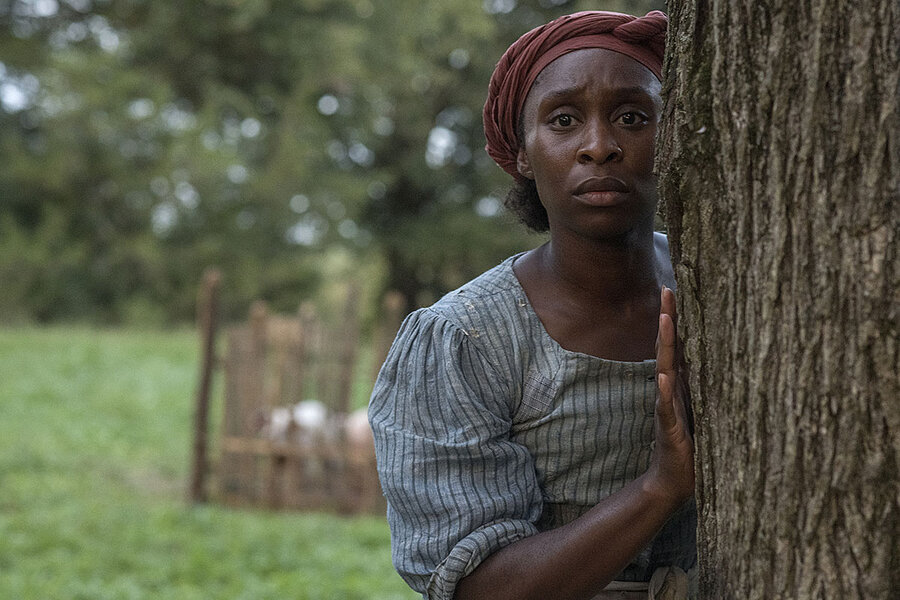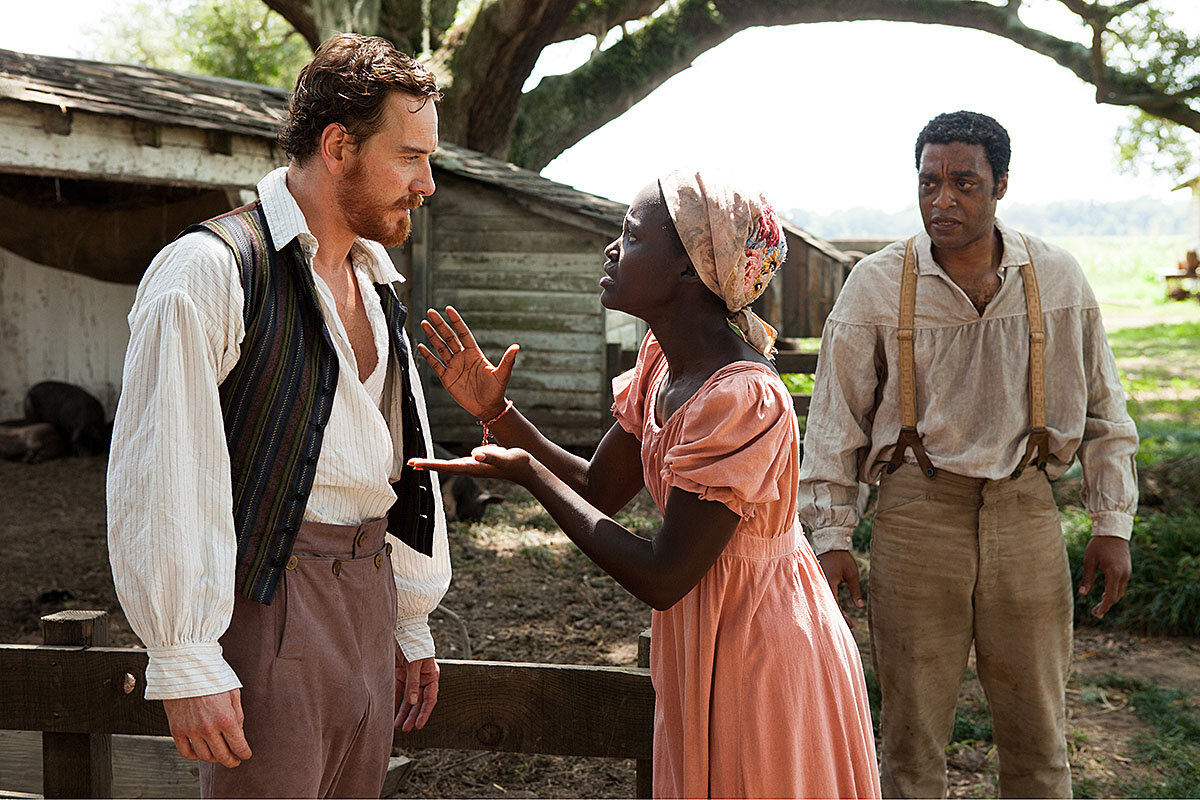‘Harriet’ biopic: One woman’s unshakable resolve
Loading...
“Harriet,” a searing movie about abolitionist Harriet Tubman, arrives in theaters at a time when the United States is examining the lasting effects of slavery 400 years after it first took hold on its shores. Fueling essays, articles, and online discussions this year is a desire by black Americans to reclaim their own historical narrative. “Harriet” helps with that, but also elevates the resilience (and faith) of women who were enslaved.
The cinematic brushstrokes director Kasi Lemmons (“Eve’s Bayou,” “Black Nativity”) uses to paint her picture of Tubman feel both straightforward and extravagant. The historical biopic drives home the significance of Tubman’s legacy: She escaped slavery in 1849 when she was just 27 years old. Although she bravely managed to secure her freedom fleeing the Maryland plantation on which she was born and raised, she refused to leave her people behind.
Tubman successfully freed about 70 of her family members and friends during some 13 rescue missions with support from the safe houses and people that made up the Underground Railroad. She was also the first woman to lead an armed expedition in the Civil War and later became active in the women’s suffrage movement. Tubman shouldn’t be categorized as just courageous since she was, in fact, a real-life heroine. “Harriet” masterfully reminds us of this at every possible moment.
Why We Wrote This
It’s rare for a heroic black woman to be the focus of a film. Reviewer and cultural critic Candace McDuffie notes that the new biopic about Harriet Tubman holds a crucial place in the canon of films about slavery.
Cynthia Erivo is bold and inspirational as the film’s protagonist. Tubman suffered a traumatic head injury at the hands of her master when she was a young girl. The repercussions of this attack manifested as Tubman having strange and powerful visions. She attributed her fainting spells to signs from God, and in the film Erivo pushes her character’s religious devotion beyond expectations. Her on-screen out-of-body experiences do more than convince viewers of her ecclesiasticism – they convince them of her dynamism.
Her body, Tubman explains, is merely a vessel that God uses to guide slaves to freedom. Although her followers and fellow abolitionist William Still (played by a stoic Leslie Odom Jr.) are initially skeptical of Tubman’s claims, her remarkable expeditions proved just how extraordinary she was.
Tubman’s passionate speeches, accompanied by an equally prophetic score (written by jazz composer Terence Blanchard), convey her fearlessness and unshakable resolve. Seeing her in action – luring away slaves from their plantations using only the sound of her voice, jumping into rivers to escape merciless captors, navigating dangerously unpredictable terrain in her quests for liberation – breathes life into the arid anecdotes that are told about Tubman in U.S. history books.
Erivo’s casting has been met with some backlash, as people have objected to an iconic black American being played by a British actress of Nigerian heritage. Erivo, a Tony-, Grammy-, and Emmy-winning actress, has also faced renewed criticism for past tweets that seem to mock or look down on black Americans. She has apologized, she says, and has asked people to see the movie and then judge her suitability.
The value of “Harriet” may be clearer to critics when juxtaposed with other modern movies that cover the same atrocities: “Django Unchained” from 2012, Quentin Tarantino’s violent homage to spaghetti Westerns that includes slaves; the incendiary but historically accurate “12 Years a Slave” in 2013; and 2016’s cogent (though controversy-mired) “The Birth of a Nation,” based on Nat Turner’s slave rebellion in Virginia in 1831.
In all of those, male characters are central and female slaves are presented as rape and torture victims in need of rescue. In reality, as historian Mary Ellison explains in her essay “Resistance to Oppression: Black Women’s Response to Slavery in the United States,” enslaved women were plotters, rebels, “and insidious perverters of the tried and dishonest course of slavery.”
For that reason, “Harriet” holds a crucial place in the canon of films about slavery. At times it does feel hyperbolic: An enslaved woman relies on signs from God to risk her life for freedom and is compelled to bring others with her on numerous occasions. But Tubman is spectacular, and the fact that viewers know the hero doesn’t succumb to evil forces provides a feeling of insulation that we just aren’t used to. For two hours, we are enveloped in the greatness and valiance of black womanhood – something we hope to see again soon on the big screen.








